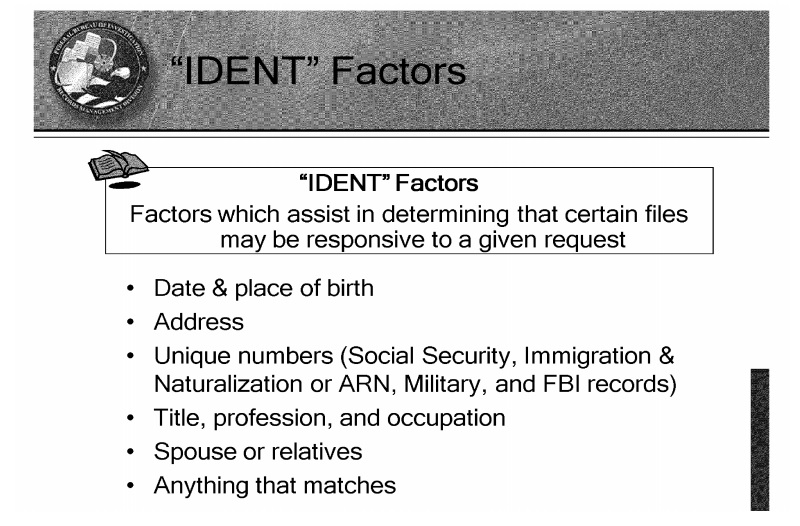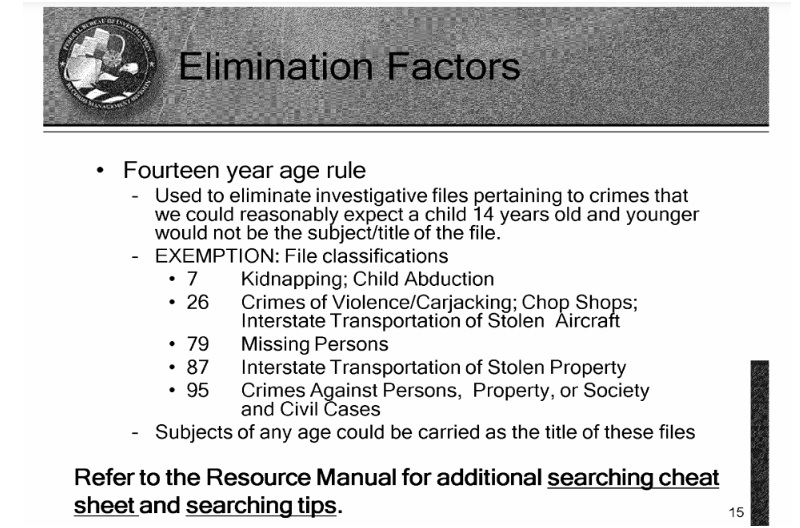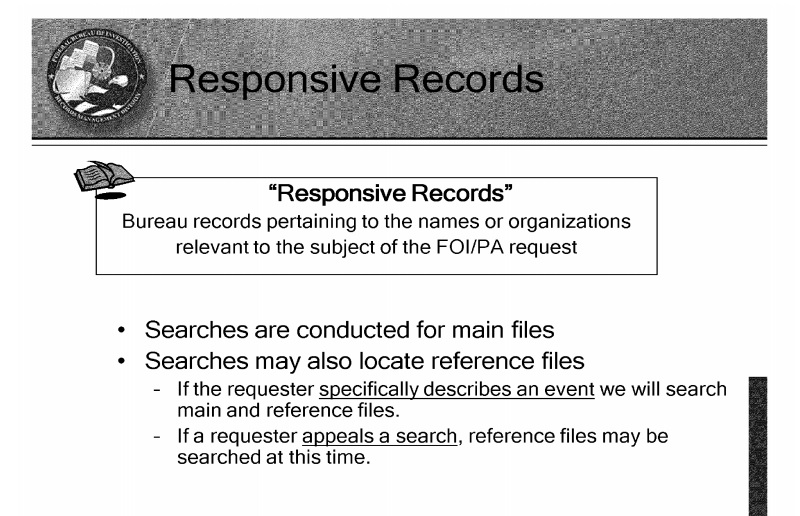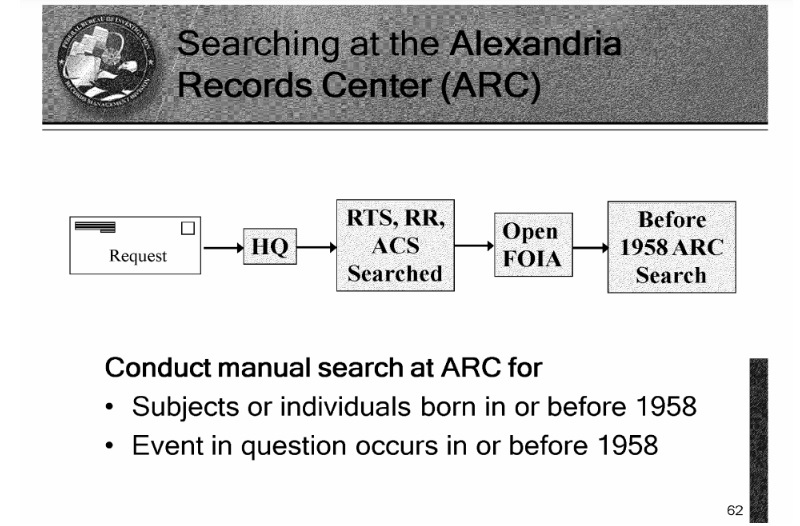A presentation from the Federal Bureau of Investigation’s Records Management Division uncovered by Paul Galante as part of our Ronald Reagan FBI file crowdsource outlines the process used by FOIA officers to search for records.

The presentation appears to date from the mid-’00s. While several of the slides can be a tad on the technical side …

the material provides a rarely-seen insight into what actually goes into the FOIA process …

and, more importantly, what doesn’t.
As the presentation shows, files are considered responsive to a request based off of two key factors: identification …

and elimination.

While some of the elimination criteria are fairly straightforward, others, such as the “14 year age rule,” are a bit more open-ended to an individual FOIA officer’s judgement.

(Don’t know about you, but I know plenty of preteens that are strong suspects in arson cases.)
Records that meet the identification/elimination criteria are deemed “responsive,” which is further broken down into main files and “references.”

As the presentation makes explicit, FBI FOIA officers only expand the search to the reference files if the requester has described a specific event that would likely only be included in a reference file or in response to a FOIA appeal.

Which, in the words of our friend Nate Jones of the National Security Archive, is a great reminder to always appeal.
Another interesting insight is where the FOIA officers are doing the searching. While a great deal is done through the wonderfully dated FBINET …

the presentation indicates that for files related to events that occur on or before 1958, and individuals born on or before 1958, FOIA officers are required to search the “Alexandria Records Center.”

Which entails a field trip to an actual building …

and a physical search of indices, microfilm, and microfiche.

Relying on physical records for such a massive part of the FBI’s history is not only inefficient and expensive for both the Bureau and requester (it’s likely that the ARC is the “classified enclave” that the Bureau referenced when justifying its high duplication costs), but it’s also incredibly risky - just five years ago, flooding in Virginia destroyed thousands, if not tens of thousands, of records from this very same facility. All of that could have been prevented if the Bureau had properly digitized its records - or better yet, stopped insisting on the classified and confidential nature of files from over 60 years ago (at least).
Lastly, the presentation includes a “cheat sheet” …

and a classification guide …

which are both particularly interesting for their references to “blackballing”. First brought to light by Trevor Griffey and Jason Leopold back in 2012, “blackballing” is a process through which the Bureau determines a record not to be responsive even if it shows up as a result of the search terms provided - the root cause of many a suspicious “no responsive documents” response.
Thanks again to Paul Galante for the find. Read the full presentation embedded below, or on the request page, and if you’d like to join in the Reagan FBI file crowdsource, clink the link below.




